Acorn Cake and Acorns Around the World
January 03, 2010 | Updated May 19, 2020
As an Amazon Associate I earn from qualifying purchases.
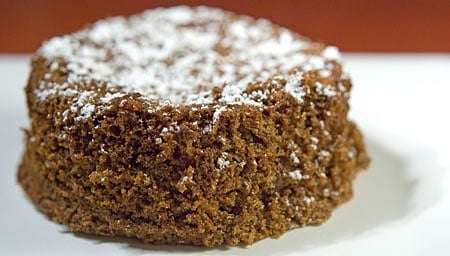
One of the first questions I had as I began researching acorns years ago was what do other groups do with them? The literature is dominated by roughly hewn recipes from either various American Indian groups or hippies. Neither, quite frankly, are recipes I am overly jazzed about.
Oaks live all over the world, from Asia to North Africa to Europe to North America. And where there are acorns, people have eaten them. They have their own methods, too.
Turns out the acorn-eatingest people in the world right now are the Koreans. If you go to a good Asian market, there is a good chance you will find acorn flour and acorn noodles, which look just like soba noodles. From what I can tell the noodles are eaten in the same way soba noodles are; and yes, they also appear to a lesser extent in Japanese cuisine.
Any Korean food experts out there? My question is whether acorn flour and noodles are considered low-class or poor people’s food. Because that is their stigma everywhere else in the world, best I can tell.
This is interesting. A certain set of scholars think that sometime around 10,000 years ago, humans — who ate acorns with aplomb at the time — grew in population to the point where they were overeating them and threatening the oaks. Great big oaks that gave sweet acorns would be in demand and might even be fought over, as the Indians did in parts of California.
So with too few acorns and a burgeoning population, the scholars theorize that the people looked to wild grains as a secondary source of vital carbohydrates. And carbs are key to a hunter-gathering society; remember the Forager’s Dilemma?
Turned out these wild grains — emmer wheat, spelt, barley and rye — domesticate easily, are annuals so can be planted anywhere if your tribal group moves around, and give easily collectible seed that is lighter than a big ole’ bag of acorns, which have a pretty long lag time from acorn to acorn-bearing oak. And good luck moving a giant oak when invaders arrive, but you can flee with some barley seed and plant again next spring.
Acorns, which are, for the most part, bitter and need to be water-leached at least once or twice to be palatable, fell by the wayside. Acorns also lack gluten, which is vital in making bread items stick together. Wheat, barley and rye all have at least a little gluten. So acorns, and in Europe chestnuts, which have a similar consistency, fell to the status of emergency or famine foods. A fixation with whitened wheat flour furthered this. Black bread was for peasants, and acorn cooks up dark. It’s the sugars in them.
Consequently, you need to search far and wide for acorn recipes in European circles. North African Berbers do use them, however. I corresponded with Paula Wolfert, who wrote the great Couscous and Other Good Food from Morocco, which is the sine qua non of Moroccan cookbooks. Wolfert told me that Berbers will sometimes make couscous from acorn flour. Fascinating. I have heard that Italians will make acorn flour pasta, too. I developed my own recipe for acorn flour pasta here.
Another source on Moroccan food tells me they also roast and salt acorns and serve them like roasted chestnuts. Linda Berzok, who wrote American Indian Food, says that the Indians around Tuscon, Arizona, sell roasted acorns from the Emory Oak, which are so sweet they don’t need leaching. An expert on Mexican food says in Chihuahua they do the same thing; makes sense, as the Emory Oak lives there, too.

Back in Europe, acorns from the cork oak are pretty sweet, and those that the famed jamon iberico pigs eat, the bellotas, reputedly need no leaching. Janet from The Old Foodie sent me a recipe for acorn bread from an English book written in 1802 that is a little like the acorn flatbreads I made last week, although with no wheat flour. These English acorn cakes are more like acorn meal hamburger patties cooked in embers.
In Europe, the thread running through most acorn and chestnut cookery is that they are fillers when wheat flour is scarce. Considering the reverence many groups have for wheat it’s pretty easy to see why anything they need to fill out a bread recipe would be seen as an adulteration, not an enhancement.
There is one European food that uses acorns that isn’t stigmatized: It’s an acorn cake. The Italians make a chestnut flour cake called castagnaccio, but it contains no leaveners. I imagine it’s like a hockey puck. So I Frenchified it and added beaten egg whites, baking powder and baking soda. I baked it in little ramekins and topped it with powdered sugar.

Now I am not a cake maker. The cake itself was really crumbly — too crumbly for my taste. But the taste of the cake was amazing! It was a dead ringer for a gingerbread cake, only there was no gingerbread spices in it at all! I was shocked. All that’s in it is acorn flour, eggs, honey, olive oil, sugar and a pinch of salt. How did it get to be like gingerbread? Must be the acorns.
Acorn or Chestnut Flour Cake
Ingredients
- ½ cup olive oil
- 1/2 cup acorn or chestnut flour
- 1/2 cup cake flour or all-purpose wheat flour
- ¼ cup toasted and chopped pine nuts (optional)
- ½ teaspoon baking powder
- ½ teaspoon baking soda
- 1/4 teaspoon salt
- 3 separated eggs
- ½ cup honey
- ¼ cup sugar
- Confectioner’s sugar for dusting
- Butter for greasing pans
Instructions
- Grease the springform pan or ramekins. Preheat oven to 350°F.
- Mix the acorn flour, wheat flour, baking soda and powder and salt in a bowl. In the bowl of a stand mixer, or in another large bowl, beat the egg yolks, oil, honey and 2 tablespoons of sugar together until it looks like caramel. Mix in the dry ingredients.
- In another bowl, add the egg whites and just a pinch of salt and beat into soft peaks. Add the remaining sugar and beat a bit more, so the whites are reaching the firm peak stage.
- Fold this into the dough a little at a time gently. Pour, or really gently place, the dough into the ramekins (remember they will rise!) or the springform pan. Using a rubber spatula flatten out the top and place in the oven as fast as you can.
- Bake for about 30 minutes. After 20 minutes, watch for burning, as acorn flour browns faster than chestnut flour. Remove from the oven, let rest 5 minutes, then turn out onto a rack to cool.
- When they have cooled for a good 15-20 minutes or so, dust with the confectioner’s sugar.
Nutrition
Nutrition information is automatically calculated, so should only be used as an approximation.

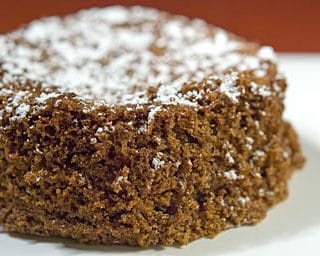

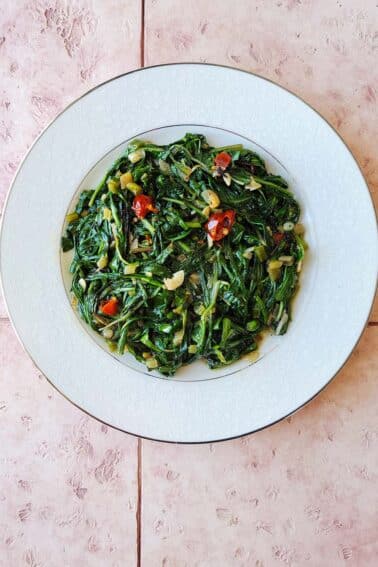
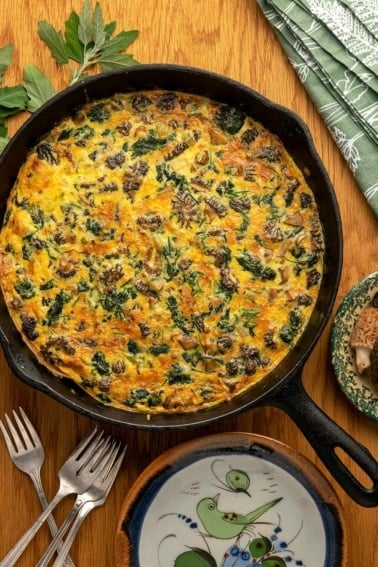
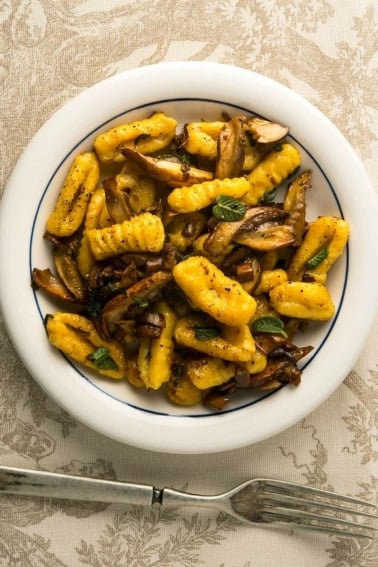
Awesome, thanks for the info! I want to try this. I am reading about the Druids and they think the word is cognate with the Greek “drus”, meaning “an oak”, and “wid” meaning “to know” or “to see”. My book says “The origin of the Druid caste has had its root in the ‘food gathering age’ when extensive oak forests covered Europe. We are speaking of a period prior to 4000 BC when primitive hunter gatherers saw the oak as a symbol of plenty, collecting acorns as a means of food and finding them easy to store for more difficult days….According to Pliny, the acorn was ground and baked into bread. Publius Ovidius Naso, the poet Ovid, speaks of the acorn as the first food ever given to humans when they were dropped from the great tree of the sky-god Jove or Jupiter. Strabo speaks of acorn bread as a staple diet of the Celts of Iberia, while the Leabhar na Nuachonghbala, composed about AD 1150, records that in one particular bad year every ear of corn bore but one grain and every oak only one acorn, which indicates that the acorn was still regarded as an article of food classed with grain by the Irish”. So it sounds like the acorn may have been one of the earliest foods at the origin of man. I think that’s really cool and it makes me kind of sad that your sources say modern Europeans scoff at it!
This recipe has become a Thanksgiving staple in my home. I’ve tweaked the recipe a little, including using vegetable oil instead of olive (not keen on a strong olive taste) and using a slightly reduced amount of oil. I also use more honey and less sugar, and have found that a dark honey, compared to a grocery store clover honey, really adds some extra depth and warmth to the flavor. I also add a few pinches of cinnamon. As for mixing the batter, the first time I made this, I forgot to separate the eggs and ended up mixing all the ingredients together at once — no harm there and the texture is still light; I’ve mixed everything together from the beginning since then. Because we often travel for Thanksgiving, making the acorn cake as muffins is great for both nibbling in the car and general distribution.
I pass this recipe to everyone who asks about the cake. It’s my favorite!
Thank you so much for this recipe! Made these tonight with some valley oak flour from a bountiful tree in our yard. I followed the directions exactly, except I cut the sugar down to about 1.5 tablespoons. Pulled them out at 24 minutes and they were perfect, surprisingly tasty and not crumbly at all.
I tried making this last night. I was afraid I’d burn the cake and I took it out too early, but other than that it came out great.
I didn’t detect the gingerbread taste so much as almost banana bread. However, I topped it with some spiced apple butter I just made and the combo was amazing.
Thanks for the recipe!
Hi Hank, thanks for all the great info on this site.
Ive tried making a few bathes of Acorn flour this fall from some White Oak acorns. Im running into an issue where after drying (in an over on about 150) the acorn meal has a burnt rubber smell. The smell seems to get worse after Ive ground them to flour consistency baked them.
Any thoughts?
Use fresh acorn meal moist rather than drying it out first. You can freeze portions of it and thaw in time for future recipes.
Thank you for this information. The first information on making acorn flour said too boil the meal which I think would destroy most of the flavor.
B Clark: you can do that, and it works. But cold leaching results in a better flour, IMHO.
When I grew up in England, the local farmer paid one shilling (about 7 US cents) for a hundredweight (112 pounds) of acorns for his pigs. I did it once with a friend and it took all morning. It was backbreaking work and I swore I would never do it again. In that part of the world we very occasionally called acorns “pignuts”.
Pretty sure acorns in Korea are considered a high-class food because they take so much labor! The most common form is “dotorimuk” which is a jello-like substance usually flavored with soy sauce and scallions.
https://en.wikipedia.org/wiki/Dotorimuk
Does anyone know if, when and how acorns were used for stock feed??
I’ve enjoyed reading all of your posts on acorns. I’m a Korean-American who enjoys acorn foods a lot. To answer to your question ‘My question is whether acorn flour and noodles are considered low-class or poor people’s food. Because that is their stigma everywhere else in the world, best I can tell.’, we don’t consider acorn food for low class or poor people’s food. We consider them as very healthy foods. That is why we’ve developed so many applications with acorns. My favorites are acorn tofu and acorn noodles.
Geni: Thanks for that! Been wondering…
Hank,
Just made my second batch of acorn flour in Amsterdam! Great taste! Going to try out other recipes as well.
Thanks for this great food!
I made the acorn cake for Thanksgiving and it more than held its own in a very crowded dessert field! I cold leached Valley Oak acorns, then ground them into flour in a Vitamix. I used honey from my own town, Pacifica, and you could taste that too in the cake. Really yummy, perfect texture and it jazzed me so much to be cooking with acorns! Thank you for the great recipe.
I just made your recipe with some Valley Oak acorns (I live in Northern CA) and it was DELICIOUS!
The leeching process was a bit tedious, but worth the effort. I boiled my batch of acorns probably 10 times, lightly roasted them and stored them in my fridge until I was ready to use them. I ground the roasted nuts in a coffee grinder to get a fine texture.
My cake was spongy and fluffy – not crumbly at all. I’m not sure what could have made yours so crumbly? It seemed like the beat egg whites were really helpful to keep the cake light and held it together.
I like that the simplicity of the ingredients really allow the special acorn flavor to be tasted.
I think there could be some interesting variations on this cake, served with fruit and/or ice-cream to really make a decadent desert.
Thank you for the acorn cake recipe. I made it last night for my mother’s 80th birthday party, since she’s a fan of the unusual and of wild plants (we’re in California).
It was popular, delicious, and as you say, amazingly reminiscent of gingerbread.
Incidentally, you don’t indicate what the cook might do with the optional pine nuts. I omitted the powdered sugar and sprinkled them on top. I’m guessing you had in mind mixing them into the batter at some point.
I know this is an older blog, but I was at the Korean grocery store with my mom and bought myself some acorn cake because she use to make this when i was growing up and it was a favorite. After I got it home I wanted to research it and found this blog curious to know how other people ate it. The way we buy it comes in a package like a more solid jello form. It is green and she would cut into bite size pieces and soak it in a soysauce mixture with sesame seeds, green onions and maybe sesame seed oil so it’s sticks a bit because it’s not very porous. Usually by the next day the flavor will soak in and is fun and tasty to eat with rice of course.
I found your blog while searching for homebrew recipes using acorns. Seems they were used in early settlement of America along with squash (pumpkin) and perhaps corn to make beer since malted grains were not available. I will be trying some of your recipes as food pairings with my acorn beer!
Cheers!
Hank in Norther Germany, you have basic red oak usually. They are medium to high in tannic acid content but you can leach them out easily.
As above I am in Germany also and the acorn flour I make last for years nonrefregerated nor frozen.
Look me up and we can chat.
my SKYPE is usually up when I am home and not out doing Paleo work.
Simply look for barongalwin. Send me a message with “Acorn Flour” in the spot and I will know to reply.
I also have been cooking with acorn flour for several years now. The flour I make can be kept in a cool dry location for long periods of time. The current batch is over 3 years old, but almost depleted so I will make more this season.
Also I have made what people tell me is a darn good Sopapilla with a Acorn / white flour mix. 1 part acorn flour to 2 parts white flour, use a normal sopapilla recipie and your about there spot on. You can go to a 50 & 50 mix but they do not puff up as much and are heavier then.
Currently instead of white flour I am considering the use of potato starches instead, I just need to figure a good way to hand make potato flour with out modern electrical equipment.
Currently I am trying to find a good Soba noodle style recipie, my regular sobas work out fine, but the same ratios do not seem to work as well with acorn, so I am trying to go to a 1 to 2 raito instead.
Best and good luck on the foot.
Galwin
Great read on cooking with acorns. Arts culinaire magazine did an article on a San Francisco Chef James Beard award winner Corey Lee and featured his cooking with acorns, acorn soups and apps.
Could you comment please on using Acorns from the English Oak? They are about the only kind which grows here and I am aware that they are higher in tannins than most.
FYI There are two oaks native to UK, the Sessile Oak and the Pedunculate Oak. Both may be called English Oak for the purposes of timber but they can be told apart from each other in almost every part including bark, leaf and form. (most Brits don’t know this) Neither of these trees is unique to England (or the UK) but English oak is much slower growing than say “French” Oak of the same species. This make it more dense, tougher and longer lasting .
The Acorns are about mid way in the European oaks in terms of tannin. But what is not mentioned above in terms of prize oaks of American Indians, every oak can vary in tannin levels and so a low tannin specimen is a prize in terms of lowering the processing times to prepare it.
No doubt Acorns are a famine food but since there has not been a famine in all England since the 14th Century this knowledge has been lost, unlike some countries in Europe where famine has been a regular occurrence, usually during the many wars that have ravaged the continent.
Acorns have always been recognised in England as the perfect food to fatten the pigs in their final months, – Called “pannage” it was a right mentioned in the Domesday Book. Today only the Portuguese and Spanish carry on this practice and “Ballota fed Black Pig” is probably the best ham/jamon in the world.
Chestnuts although they grow well enough in SE England (introduced by the romans) the fruits rarely ripen well enough to gather and most chestnuts for sale are imported from Southern Europe. They are used for roasting, stuffing the Christmas Turkey and sometimes soup, but the boiled chestnut snacks of Asia or the wonderful “Mont Blanc” sweet (French but ubiquitous in Japan) are unknown in the UK.